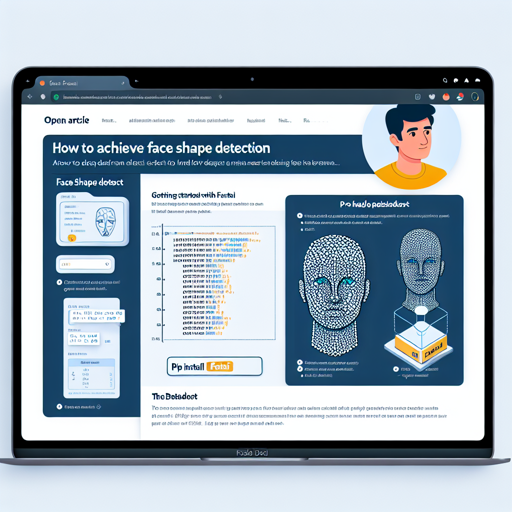In this article, we’ll explore how to leverage the FastAI library to build a face shape detection model that achieves about 82% accuracy. FastAI simplifies the process of deep learning, making it easier for beginners and seasoned programmers alike to develop powerful AI applications.
Getting Started with FastAI
Before diving into the implementation, ensure you have FastAI correctly set up in your environment. You can install FastAI using pip:
pip install fastaiThe Dataset
We’ll be using a dataset loosely based on an approach available on Kaggle. This dataset contains images labeled with different face shapes, making it ideal for our training purposes. Ensure you download and prepare the dataset as required by the FastAI library.
Building the Model
Now, let’s break down the model creation process. We will follow these key steps:
- Prepare the data
- Create a learner object
- Train the model
- Evaluate accuracy
1. Preparing the Data
To start, we’ll load our dataset and create a datablock. Think of this as setting up a library where each book (image) is neatly organized for quick access. FastAI allows you to specify how images and labels are retrieved, ensuring that your model can learn effectively from the data provided.
from fastai.vision.all import *
path = Path('path/to/your/dataset')
data = ImageDataLoaders.from_folder(path, valid_pct=0.2,
item_tfms=Resize(224))
2. Creating the Learner
Next, we’ll create our learner, which is the model that will learn to classify the images by face shape. You can think of the learner as a student who will study the organized books in your library. The student requires good guidance (a loss function and an optimizer) to learn effectively.
learn = cnn_learner(data, resnet34, metrics=accuracy)
3. Training the Model
Now it’s time for our learner to begin the study! Using FastAI’s `fit_one_cycle` method, we can efficiently train the model while ensuring it doesn’t overfit to the training data.
learn.fit_one_cycle(4)
4. Evaluating Accuracy
After training, it’s essential to assess how much the learner has grasped. Here, we’ll check the accuracy on both training and validation sets to ensure the model is performing well.
learn.validate()
Troubleshooting Guide
If you encounter issues, consider the following troubleshooting steps:
- Ensure that the dataset is correctly downloaded and structured in the expected directory.
- If the accuracy is lower than expected, consider adjusting the learning rate or retraining with more epochs.
- Check for possible imbalances in your dataset; ensuring a varied set of samples can significantly improve accuracy.
- For more insights, updates, or to collaborate on AI development projects, stay connected with fxis.ai.
Conclusion
Using FastAI for face shape detection not only simplifies the complex workings of deep learning but also equips you with practical skills to advance your AI projects. Remember, practice is key, so keep experimenting with different datasets and models!
At fxis.ai, we believe that such advancements are crucial for the future of AI, as they enable more comprehensive and effective solutions. Our team is continually exploring new methodologies to push the envelope in artificial intelligence, ensuring that our clients benefit from the latest technological innovations.

